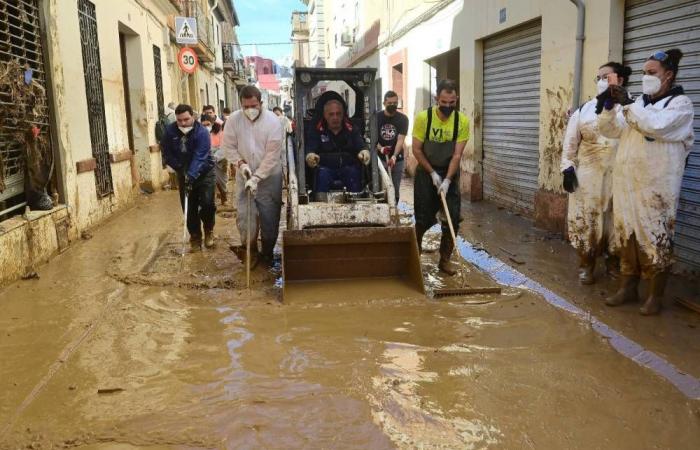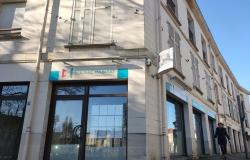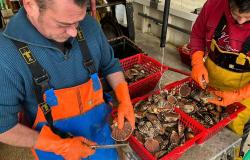A month after the floods which left 230 dead and billions of euros in damage in the south-east of Spain, weariness is showing among the inhabitants of the affected municipalities, where rallies took place on Friday in tribute to the victims.
“We are swimming in mud, literally. The children have no school, things are only changing very slowly“, laments to AFP Sabrina Bermejo, resident of Paiporta, a town in the Valencia region considered to be the epicenter of the tragedy.
Candle in hand, this forty-year-old took to the streets of the town on Friday evening, with several hundred residents, for a ceremony organized one month to the day after the disaster. A moment of contemplation, punctuated by the ringing of the bells of the neighboring church.
“Paiporta, united, will never be defeated!“, shouted local residents, before observing a minute of silence at exactly 8:11 p.m. – the time at which the regional authorities of Valencia ended up launching an alert on mobile phones on October 29, more than twelve hours later the alert issued by the meteorological agency.
“We pay tribute to the victims, both those who left and those who remained“, explains Bea García, a 43-year-old teacher. “People continue to feel alone, anger remains and there is fatigue and frustration. We are all exhausted“, she insists.
In Paiporta as in the other towns affected by the tragedy, where similar gatherings took place, the chaotic management of the disaster is the main grievance of the victims, some of whom say they feel “abandoned“.
“We must be very understanding (…) in the face of the demonstrations“, recognized the president of the Valencia region Carlos Mazón, whose “resignation” was once again demanded by many demonstrators on Friday evening. It is also necessary “that we are effective“added the conservative leader, widely criticized for his management of the alert and relief.
In recent weeks, dozens of roads have been rehabilitated, train traffic has resumed and tons and tons of mud and debris have been removed, thanks to the work of the military, firefighters and volunteers. But “there is still a lot of work to be done“, Socialist Prime Minister Pedro Sánchez recognized on Wednesday. “There are hundreds of flooded garages and basements, damaged buildings, closed businesses, cut roads, entire villages that have not yet returned to normal life.“.
According to Economy Minister Carlos Cuerpo, based on insurance data, 69,000 homes, 125,000 vehicles and 12,500 businesses were affected. According to the Bank of Spain, this damage could cost the country up to 0.2 points of growth in the fourth quarter.
In Catarroja, in the southern suburbs of Valencia, the scars of the disaster are still omnipresent, both in the streets and at the entrances to the city, where dozens of wrecked cars are piled up. “We are very tired“, sighs Amparo Peris, a 35-year-old care worker. “Sometimes we have electricity, sometimes not… Some days, at mealtime, we are without electricity and we say to ourselves +now, what are we eating?+ (…) We hope this passes soon“, she explains.
Since October 29, “I got a little stuck mentally“, assures Gyovana Giménez, whose restaurant was ravaged by the floods. “When the aid arrives, when we receive insurance compensation, we can try to get back on track“, adds this forty-year-old.
To help the victims, the government has promised 16.6 billion euros in aid and loans. But this substantial envelope does not succeed in completely silencing criticism against the authorities. This anger peaked on November 3 during a visit to Paiporta by King Felipe VI and Queen Letizia, accompanied by Pedro Sánchez and Carlos Mazón, marked by insults and mud throwing.
A sign that discontent remains strong, a new demonstration is planned for Saturday in Valencia, the regional capital. At the beginning of November, 130,000 people had already gathered there, with the main slogan being the resignation of Carlos Mazón.






